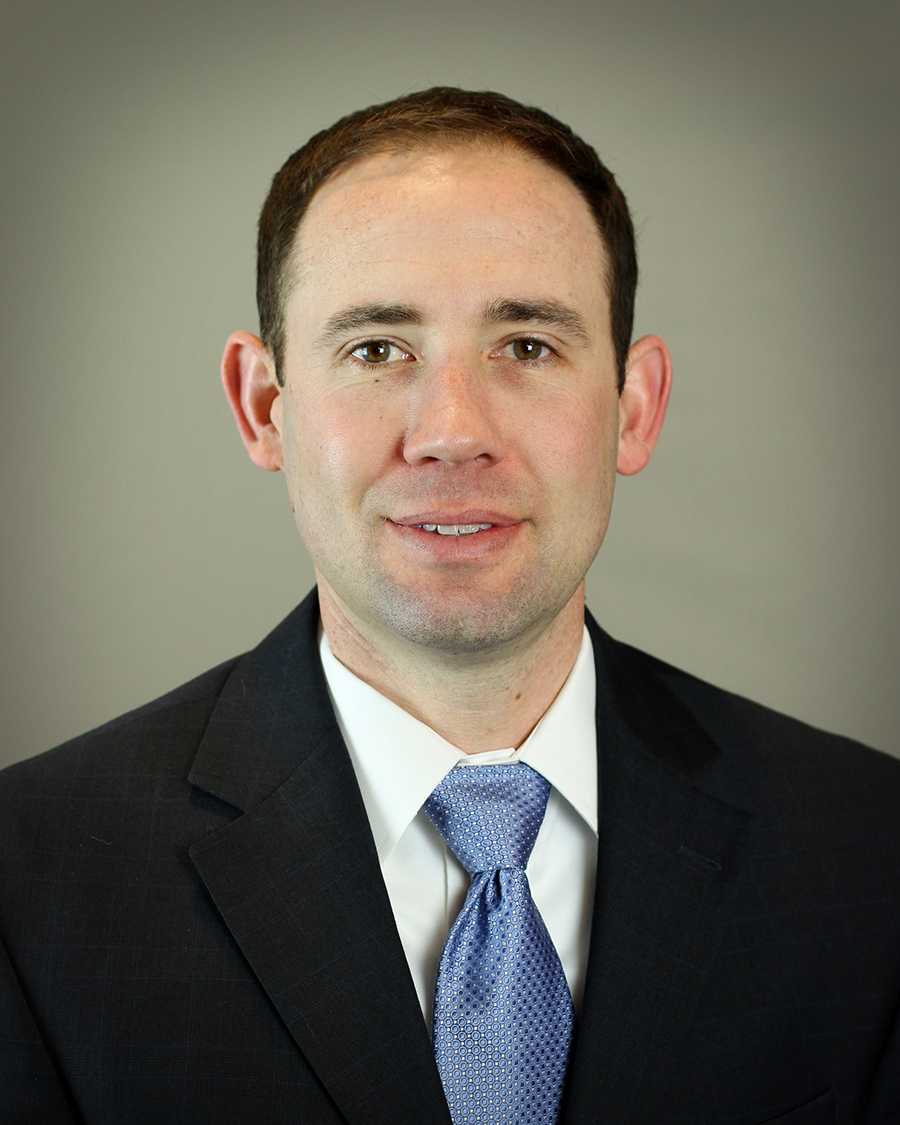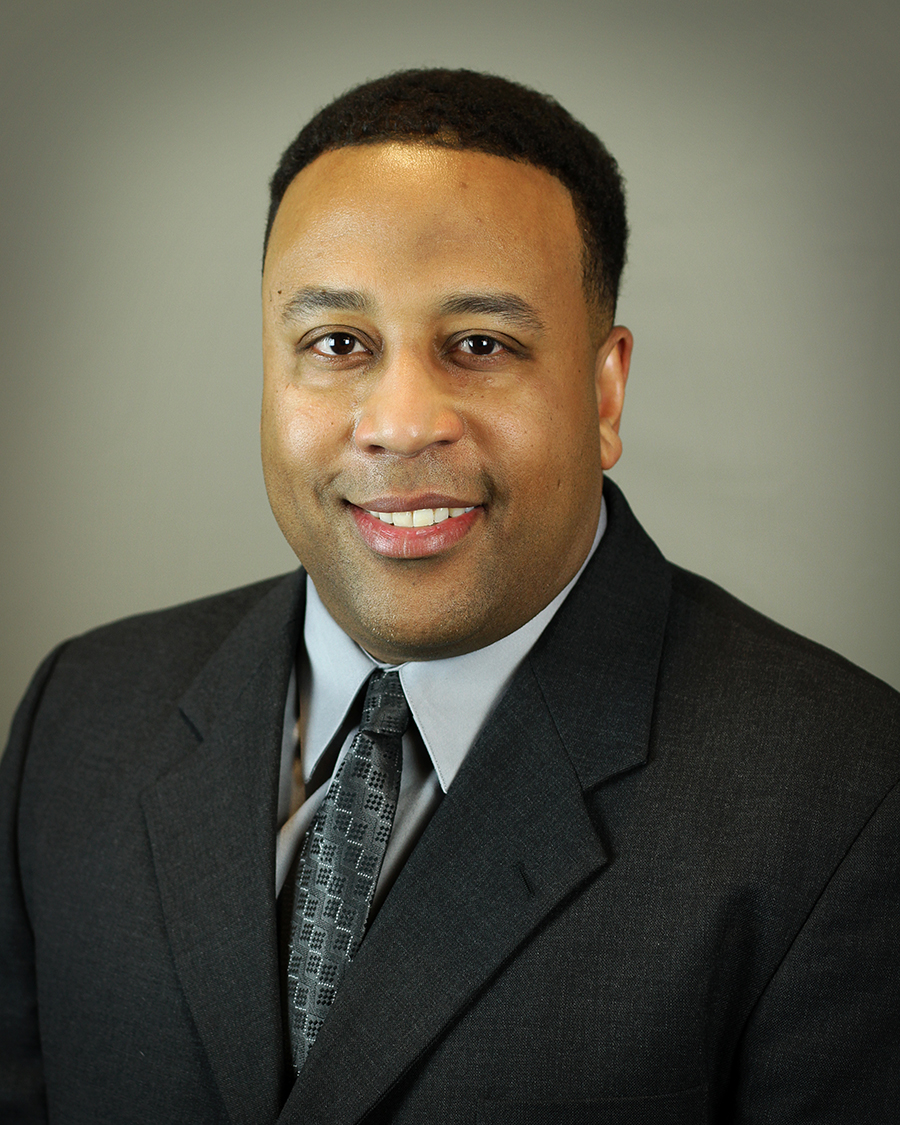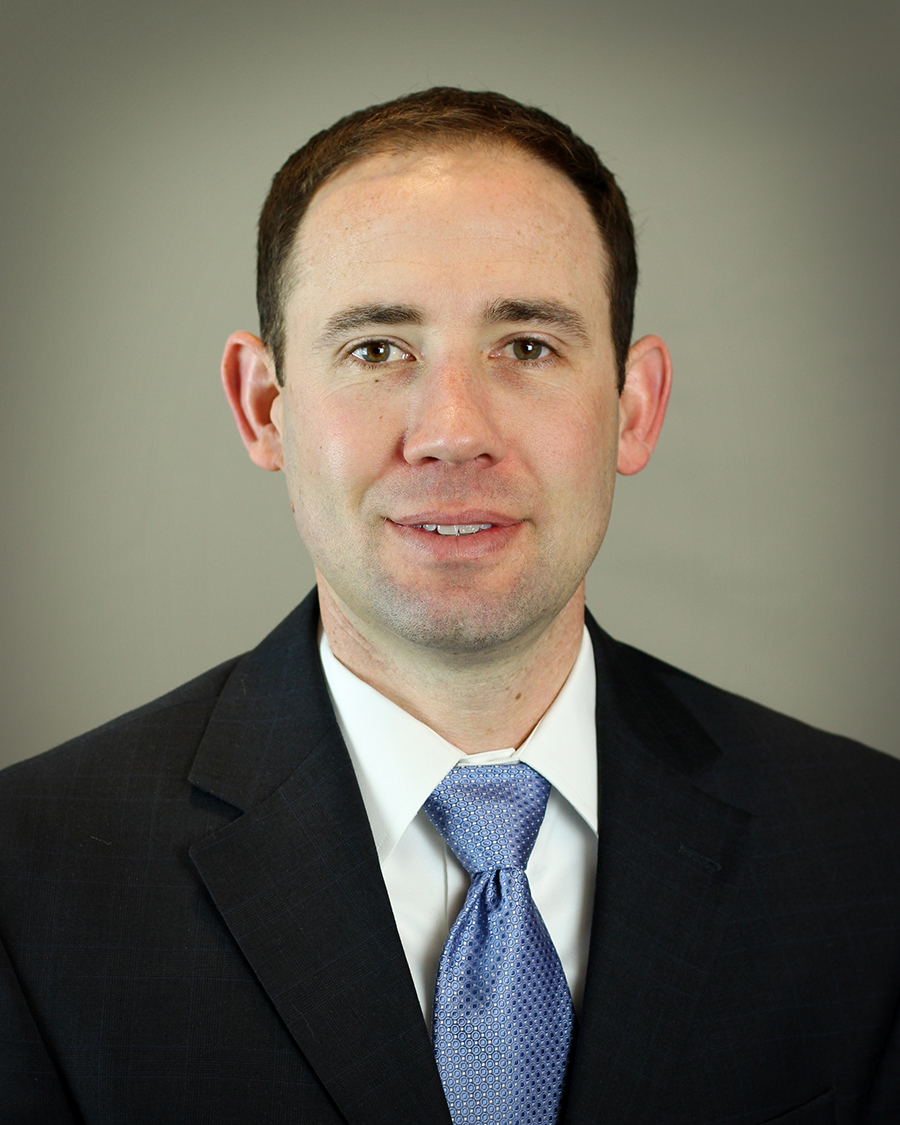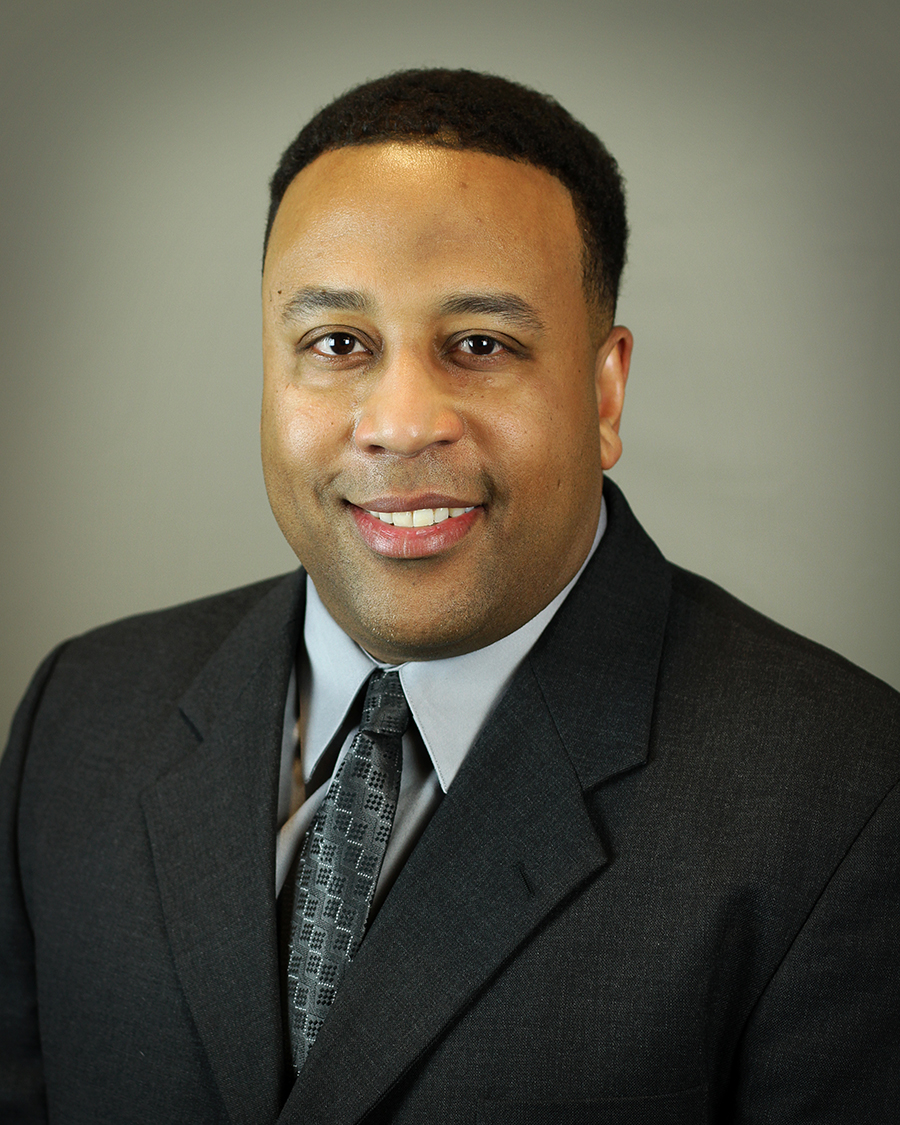According to a recent report by the Bureau of Labor Statistics, roadway incidents accounted for 1264 work-related fatalities in 2015. That is about one out of every four fatal work injuries in the United States, which easily makes it the top cause of work-related fatalities followed by falls (800), contact with objects and equipment (722) and violence and other injuries by persons or animals (703).
Public entities have a unique exposure to fleet-related claims as drivers can range from employees who occasionally run errands to emergency personnel patrolling the streets 24 hours a day, 7 days a week. Many entities (public and private) think of fleet safety as the prevention of physical damage to automobiles. However, fleet-related claims can have a devastating impact on so much more. A lack of fleet safety can also result in property damage, employee and civilian injury/death, public relations nightmares, etc.
Some key elements of an effective fleet program:
Management Buy-In
Management buy-in plays a major role in the success or failure of any program. If employees feel that the safety program is just another “thing”, they will treat it as such. Managers and supervisors must understand the need for good controls, how fleet safety affects their operations and the importance of promoting/enforcing the program.
Strong Hiring Practices
There are many things that can be done to ensure that a qualified individual is hired. Running a pre-hire motor vehicle record (MVR) for all employees operating a company automobile provides a snapshot into their driving record.
Regular Driver Checks
The implementation of the program isn’t finished once the initial check is completed. Things can change over the course of a year. Employees’ motor vehicle records should be checked regularly to confirm they have not incurred additional violations. Significant or repeated infractions may indicate lack of sufficient training and/or a poor attitude toward driving.
Written Criteria for Drivers
It is not enough just to check the MVRs. It is essential to have criteria in place that approves or rejects drivers according to their MVR results. This should be in writing and communicated to the employees. When employees understand they can lose their driving privileges and/or job because of certain driving violations, they will be more apt to drive responsibly during both work and personal time.
Formal Written Programs
If it is not in writing, it does not exist. Employers should make sure there is a formal written program that spells out conditions such as driver selection, responsibilities, policies, procedures and maintenance. This program should be tied into the safety program and communicated to the employees.
Sufficient Training
Driving is similar to other hazards in the workplace (falls, back injuries, lockout/tagout, etc). Entities usually have training procedures established for those issues. Driver safety training should be included as well.
There are plenty of options when it comes to driver safety. Start by assessing your current program and have an idea as to what your ultimate goal will be. Your current insurance carrier can be a great resource to assist you with any of your safety and health efforts.

By: Matt McDonough, CSP
Senior Risk Control Manager, Safety National
Summary of Qualifications
Matt is a risk control professional with more than 13 years' risk management experience. Matt's areas of expertise include workers’ compensation, ergonomics, industrial hygiene, OSHA, fleet safety, auto liability, general liability, and property protection. He has experience working with public entities, manufacturing, construction, retail, and service industries to name a few. Matt began his career as a loss control consultant at an insurance agency where he was responsible for providing safety services to various clients including self-insured trusts. He moved on to work at a major insurance carrier serving in various capacities as a senior loss control representative and is now a senior risk control manager at Safety National. Matt is a registered safety consultant in the State of Missouri, a registered loss control consultant in the State of Texas and an approved field safety representative in the State of Arkansas.
Responsibilities
Matt is primarily responsible for managing risk control services on a portfolio of accounts including both private and public entities. He provides technical advice and helps coordinate risk control services for clients. He also represents Safety National as a thought leader on risk control subjects and assists with developing new resources and enhancing existing resources.
Professional Affiliations
American Society of Safety Engineers (ASSE)
Board of Certified Safety Professionals (BCSP)
Education
B.S. in Safety Management, University of Central Missouri
Certified Professional (CSP) designation, The Board of Certified Safety Professionals
Two recent cases highlight the importance of understanding the nuances of insurance coverages pertaining to cybercrime and liability.
American Tooling Center, Inc. v. Travelers Casualty and Surety Company of America
The U. S. District Court in Ann Arbor, MI ruled that a 2015 incident involving spoofed emails was not covered by American Tooling Center, Inc.’s (ATC) insurance policy with Travelers, which provided coverage for computer fraud. The incident involved an outside party forging an email which appeared to come from a vendor of ATC. The emails instructed ATC to direct payments for outstanding invoices to a new bank account. ATC did not verify the new account information and subsequently transferred approximately $800,000 to a fraudulent account.
ATC filed a claim for the loss with Travelers but was denied. On August 1st, 2017, Judge John Corbett O’Meara found that ATC’s policy with Travelers required a “direct loss…directly caused by the use of any computer.” Judge O’Meara found that ATC’s loss wasn’t directly caused by the use of a computer due to ATC’s failure to verify the authenticity of the new bank account information provided in the spoofed email.
Medidata Solutions, Inc. v. Federal Insurance Co.
In a somewhat similar case, albeit with a different outcome, a U.S. District Court in New York ruled that Medidata’s claim, also involving email spoofing, was covered under an insurance policy that had been acquired through Chubb Ltd. A forged email, which appeared to be from the president of Medidata, was sent to an employee of the company, directing said employee to wire money to a fraudulent account. The employee wired approximately $4.8 million to the account.
Chubb Ltd. initially denied Medidata’s claim, stating that the emails did not involve a manipulation of Medidata’s computers and were instead due to the manipulations of the individual employees involved. However, the U. S. District Court in New York later ruled that the circumstances of the claim fell under the computer fraud language of Medidata’s policy.
These two cases exhibit the importance of fully understanding the specific policy language of your coverages related to cybercrime and liability, as well as the need for sophisticated internal controls governing wire transfers. The fact that an outside entity may use a computer to facilitate a fraud through social engineering techniques, such as email spoofing and phishing, does not guarantee that you will be covered under a computer crime or cyber liability policy. Regardless of your cyber hygiene protocols and barriers against network penetration, your greatest weakness as it pertains to cyber liability will always be the fallibility of your employees, and it is paramount to understand whether that risk is being adequately managed to avoid unplanned retention.

By: Nick Webster
Risk Manager, City of Winston-Salem
Summary of Qualifications
Nick has 12 yearsof experience in risk management and 7 years of experience working as a claims adjuster. He is an ARM candidate, with an anticipated completion date of December 2017. He is also a former contributor to the Winston-Salem Journal and a certified North Carolina company adjuster.
Responsibilities
Nick is the leader of the risk management, employee safety, and workers' compensation programs for an organization with over 2,600 employees. He serves on the board of directors of the Risk Acceptance Management Corporation, a city-owned entity that operates as a captive insurer for the Winston-Salem. He is responsible for obtaining and negotiating insurance policies for the city, including for a property insurance portfolio of over $1 billion in city properties. Nick also serves as an advisor to the city council as well as a contact for local newspaper and television media for risk management-related issues pertaining to the city.
Business Experience
- Senior Claims Professional with Key Risk (2005-11)
- Claims Compliance Specialist with Key Risk (2011-16)
- Risk Manager, City of Winston-Salem (2016-Present)
Professional Affiliations
Nick is a member of both national PRIMA and PRIMA's North Carolina chapter.
Education
- Appalachian State University, Class of 2005
Bachelor of Science in Business Administration - University of North Carolina, Greensboro, Class of 2014
Master of Business Administration
Emergency rooms treat roughly a quarter of a million playground-associated injuries every year, yet the majority of these injuries are avoidable. As the amount of injuries increases, it is important for public entities to design, build and maintain playgrounds to better promote safety. Playgrounds should balance injury prevention with the desire to promote children’s ability to test their limits, build muscle, gain confidence and learn personal interaction.
There are many risks that public entities should be aware of before installation of equipment and during inspections. At a minimum, inspections should take place both during equipment installation and on an annual basis. More frequent inspections may be necessary for popular playgrounds with high levels of usage.
Risks On Your Radar
1. Banned Equipment: Before and after installing any piece of equipment that has been gifted to you, check with the U.S. Consumer Product Safety Commission (CPSC) to ensure it has not been banned or ruled to be dangerous. If an installed piece is later ruled dangerous or banned, it should be removed immediately.
2. Splash Pads: Splash pads are a popular new addition popping up at many public parks. But, there are a few items to keep in mind prior to considering installation.
- Surface Safety: Choose a surface that provides enough friction to reduce slipping. Be proactive about cleaning and disinfecting the surface to minimize the formation of algae, mold or bacteria.
- Water Safety: There are many guidelines and recommendations established by the Model Aquatic Health Code (MAHC). Following these guidelines will help combat waterborne illnesses and ensure the splash pad is a safe and clean place to play.
- Slide Safety: While there are currently no guidelines for slides at a splash pad park, if opting to include a slide, it should meet the standards of a slide installed at a regular park. This includes, but is not limited to, placing railings and a mat at the bottom of the slide. For information on slide guidelines, view the CPSC Public Playground Safety Handbook.
3. Trip Hazards: During all inspections, check for trip hazards including rocks, wood chips on the sidewalk, tree limbs or exposed footings.
4. Fall Hazards/Railings: Falls are the most common cause of injury, representing nearly half of all playground accidents. Installing and maintaining guardrails on elevated equipment will help prevent falls. If a piece of equipment lacks a rail at an elevated surface, do not hesitate to contact the manufacturer to add one. Soft rubber surfaces may also reduce cuts, scrapes, and other injuries resulting from a fall on a harder surface.
5. Choking and Entanglement Hazards: To avoid risks like this, ensure bolts, hooks and projections have minimal exposure. It can be extremely easy for a child’s clothing to become entangled on playground equipment. Consider signage reminding parents to have children remove jewelry, jackets or clothing with drawstrings that could cause choking or entanglement. Railings to prevent falls should also have bars spaced close enough to prevent children from sticking their heads through the bars and getting stuck.
6. Equipment Spacing: Playground equipment should be installed with a fall zone in mind. A fall zone extends six feet beyond the equipment. A proper fall zone prevents children from coming into contact with another piece of equipment if a fall does occur. Hitting another piece of equipment can increase the severity of the injury caused by the initial fall.
7. Signs: Signs should be posted in areas visible to equipment users and caregivers. Signs should provide guidance on the age appropriateness of the equipment. Other signage you may want to consider includes supervision and warnings for hard or hot surfaces.
Taking the time to proactively safeguard your community’s playground for the users will also help protect your public entity’s finances. Documenting inspections and any repairs on equipment or grounds will demonstrate your attempt to operate in a reasonable manner.

By: Kenny Smith
Risk Control Manager, OneBeacon Government Risks
Summary of Qualifications
Certified Safety Professional (CSP)
Responsibilities
Development of risk management resources and training programs for clients.
Business Experience
Kenny has had a focus in local government since 2001 and has 37 years of risk control experience.
Professional Affiliations
Colorado ASSE
Education
BS from West Texas A&M
Some public entities may not have any or enough loss control (LC) experts to help them eliminate or reduce the losses that arise from unsafe acts and conditions. The public entity leaders may believe that they cannot afford an LC expert, even though the costs of incidents that lead to claims against the public entity are usually many times the cost of an in-house or contract LC expert.
Whether your public entity has an LC expert or not, a claims organization can often provide information to support a safety/loss control program and can point the program in the right direction based on the losses which have already been reported. The claims adjusters, whether from a self-administered program or a program administered by a third party administrator (TPA), can also provide useful information regarding the level of cooperation between department heads and supervisors whose actions have a direct impact on reducing incidents and related costs.
All public entities need to watch their budgets. For example, you could put your resources to work on targeted areas based on data. LC efforts using an untargeted approach may cause you to work with departments which have few losses, leaving inadequate time for those departments needing it the most.
The Pareto Principle, more commonly referred to as the 80/20 rule, states that approximately 20% of events generate 80% of the results. Based on my experience, this principle can also apply to workers’ compensation claims. A public entity may not have the luxury to have an LC expert work with all departments. However, the LC expert can focus on those 20% that contribute 80% (or sometimes much more) of the direct claims costs and other indirect expenses (e.g., substitute workers, overtime pay for those filling in but are less efficient in their work, delayed project completion and related expenses, supervisory time managing the outcome of a loss).
The way to hone in on the departments needing LC attention is to create meaningful summary reports that account for objective data. While data may show that the expected departments fit the 80/20 mold, the data may lead to other departments which need LC expertise. These could be departments which have received little LC support in the past, departments which have had leadership, staffing or procedural changes that have taken the departments in the wrong direction, etc.
You should work with your claims operation, TPA, risk management information system (RMIS) provider, or in-house IT department to create meaningful reports. The information you obtain may not provide a solution, but it should point to the appropriate questions or problems for which solutions must be found.
Reports should be created so that they roll up to the departments. Reports should also gather results for several years so you can easily identify any trends or “hot spots” within a department or with the public entity as a whole. Some of my favorites are:
By department by year
- Number of lost time (LT) claims, number of medical only (MO) claims, number of report only (RO) incidents and total incurred costs for the indemnity, medical, legal, and other expense categories (if legal and other expenses can be accurately segregated).
- Number of LT claims, total incurred cost (indemnity and medical categories only) , litigated cases, legal expenses, the ratio of litigated cases to LT cases and the ratio of legal expenses to total incurred costs
- Claims by highest total incurred cost. This may help to identify where serious injuries occur and which departments disallow light duty work. These factors increase indemnity costs or claims handled by a specific adjuster/claims team that is not sufficiently assertive in its management.
By claims within a department
- Claims by highest total incurred cost and type of injury
- Claims by highest total incurred cost and part of body
- Claims by highest total incurred cost, part of body, and type of injury
- “Frequent flyers”, which are employees with multiple claims over a specified period
- Lag times between the date of injury and the date the claim was reported to the claims organization and total incurred cost (ranked by highest lag time)
These are just a few reports that can help you to hone in on the departments, conditions, and employees to reduce their impact on the entity. This focus may allow you to eliminate some dangerous conditions or reduce the frequency or severity of the resulting injuries.

By: Gary Jennings, CPCU, ARM, ALCM, AIC, ARe, SCLA
Principal of Strategic Claims Direction, LLC
Summary of Qualifications
Gary Jennings, CPCU, ARM, ALCM, AIC, ARe, SCLE, is a property/casualty claims consultant with over 40 years of claims experience. He has worked over 20 years as a claims consultant and has served many public entity clients. Since forming Strategic Claims Direction (SCD) over 7 years ago, most of his clients have been in the public entity sector. Prior to forming SCD, Gary worked for insurers, third party administrators, corporations, independent adjusters, and two of the "Big 4" consulting firms (PwC LLP and KPMG LLP). His employment experience allows him to bring a wide range of expertise to his clients to help them develop their claims programs. Gary is a frequent speaker at professional conferences and has authored numerous articles, some of them being included in PUBLIC Risk magazine. His next PUBLIC RISK article is scheduled for October 2016.
Reponsibilities
SCD performs a wide variety of claims-related engagements. Gary leads and performs all engagements. He works throughout the United States performing:
1. Claims audits, to compare the program to leading industry practices and/or contract requirements, These audits may be to meet statutory requirements, to meet AGRiP certification, or to meet requirements set out by the board of directors or commissioners.
2. Reserve reviews to evaluate the reasonableness of reserving procedures and the estimates. This may be needed when public entity risk management programs merge, when a concern arises about reserving by a TPA or self-administered program, or to support a casualty actuarial evaluation.
3. Claims efficiency studies, which include an analysis of the claims processes to identify redundant or unnecessary steps, to determine if the claims personnel should be realigned to optimize Return on Investment (ROI), to determine if system enhancements are necessary to improve efficiency, or if other steps are needed.
4. Assistance in TPA selection, including development of the claims-related requirements, creation of a grading methodology, identifying TPAs that meet the clients' needs regarding expertise and geographic spread, evaluating proposals as received, and working throughout the TPA selection process to select the TPA that best meets the clients' needs.
5. Developing claims manuals or other procedural documentation to provide direction for public entity risk management staff, TPAs, medical management organizations, and others.
6. Provide expert testimony relative to claims handling, reserving, and excess insurance reporting.
Business Experience
Prior to forming SCD Gary worked for the following firms:
Crawford & Company - Director Technology & Process Management
KPMG LLP - Manager, Claims Consulting
PwC LLP - Director, Claims Consulting
International Paper - Supervisor, Workers' Compensation Claims
Travelers Insurance - Claims Supervisor
This broad experience from several different perspectives provides Gary with the ability to provide his clients with "real world" answers to improve their programs.
Professional Affliliations
CPCU
Georgia PRIMA
Education
BS BA - University of Tennessee, Knoxville
You are now assigned safety and risk management duties for your organization. Now what? Where do you start? Fundamentally, the past is one of the best indicators of the future. Therefore, it is best to get a snapshot of what the lack of safety and ineffective risk management has produced in the form of losses or claims. For risk control plan building purposes, it is recommended to review and analyze claims data from a minimum of 48 months from the most current data. In this context, analyze means to determine which categories of claims are the most frequent and/or severe. The severity of claims are, of course, measured by the dollar amount of the loss. Be sure to analyze claims data in the main areas of risk management, including workers’ compensation, auto liability, general liability, employment practices liability, law enforcement liability, and property risks. Analyzing claims data in all of the main areas of risk management will help you identify the top priorities when building your risk control plan. You may have to retrieve additional information from your finance department to provide a clearer picture of losses or claims that are not covered by insurance or included in TPA claims reports.
After analyzing the frequency and severity of your claims/losses, the next step in building any plan is to define and articulate what the risk control plan intends to accomplish, and in what timeframe. The risk control plan may be related to some measurable goal within your organization and should reflect impact on multiple departments, thus, it is critical to involve multiple departments in the planning process. The best plans are built when multiple stakeholders own a part of the risk control plan and realize the financial and human cost related to the lack of safety and risk management. A good tool to use when involving multiple stakeholders in risk control planning is a risk assessment matrix. This tool can put into perspective what operations and loss areas are the most risky in terms of the frequency, severity, and likelihood of claims.
As some of us know, claims and subsequent losses are going to occur regardless of the strength of any safety or risk management program. It is in these moments where program weaknesses succumb to risks that ultimately lead to losses. In the insurance industry, we refer to these moments as residual risk. Residual risk remains regardless of all the efforts and progress made by your safety and risk management program. If claims frequently surface in certain areas, this usually indicates residual risk in those areas, which signifies additional opportunities to strengthen your risk management program. Residual risk can also be measured using the aforementioned risk assessment matrix. Strengthening your risk control program should be both strategic and tactical and should address what can be accomplished in the short-term and long-term.
Conclusively, there is a financial and human cost to maintaining the status quo and remaining stagnant with respect to the risk control function of your risk management program. The multi-million dollar question: “Is the status quo sustainable and worth it?”

By: Ariel Jenkins
Director - Risk Control, Safety National
Summary of Qualifications
Ariel has a broad base of knowledge and experience in the areas of workers’ compensation, ergonomics, industrial hygiene, OSHA, fleet safety, auto liability, general liability, and safety & health program auditing & assessment. He has experience working with the manufacturing, construction, ground and air transportation, retail, healthcare, public entities, technology, and service industries.
Responsibilities
Ariel is responsible for leading and directing technical risk control content and managing risk control services for clients (policyholders) of Safety National. He is also responsible for leading and directing risk control resources associated with the public entity practice and E&S product lines.
Business Experience
Ariel is a risk control professional with over 20 years of experience. Prior to joining Safety National, Ariel worked at a major insurance carrier, serving in various capacities as a technical loss prevention consultant of national market accounts. During this time he was assigned as district safety consultant for the largest transportation company, and one of the largest employers in the U.S. Ariel began his career as a safety consultant with the Missouri Department of Labor and Industrial Relations in the Division of Workers' Compensation, where he was responsible for monitoring the loss control services of insurance carriers and performing risk evaluations for self-insured applicants.
ERM Experience
Ariel has provided consultation for a fortune 500 company on aspects of ERM with respect to multiple stakeholder operational and strategic risks.
Professional Affiliations
Ariel has earned his certified safety professional (CSP) designation and is also an associates in both risk management (ARM) and enterprise-wide risk management (ARM-E). He is a member of the American Society of Safety Engineers (ASSE), and served as sustainability chair for the Missouri Safety Council in 2009.
Education
Ariel is a graduate of the University of Central Missouri with a bachelor’s degree in industrial safety management. He also earned a Master of Business Administration degree from Lindenwood University in St. Charles, MO.
PRIMA’s 2017 Annual Conference in Phoenix, AZ was a lot of fun due to the people I met, the things I learned, and the new experiences I had. My trip began on Sunday, June 4th. Later that day, I attended a Welcome Reception in the Valley of the Sun Ballroom where I had a great time networking and listening to a live band.
Monday started with a motivational speech by Randy Anderson, where he spoke on his “Twelve Rules for Pursuing Personal Excellence”. I highly recommend that you check them out for yourself. Afterwards, I attended the tradeshow where I talked with company representatives, filled my bags with swag and even checked out an autonomous vehicle and a VR tornado simulator. My first educational session was called “Higher Controversy: Marijuana in the Workplace” and it was presented by Matthew Fisher. It intrigued me because it’s such a prevalent and controversial topic at the moment (as the name suggests). I then attended the PRIMA Awards Luncheon where we got a chance to recognize the great work that people have been doing in the industry. Another one of my favorite sessions was titled “Deceit and Fraud Detection Strategies,” presented by Ted Richards and Dalene Bartholomew. They provided unbelievable stories regarding the extreme lengths people go to in an effort to commit fraud. They also explained how the fraudsters were caught and brought to trial. One of the best experiences of the entire trip was the Travelers-sponsored outing to the Hall of Flame Fire Museum. After that, we had a BBQ dinner at Rustler’s Rooste overlooking the Phoenix skyline.
Tuesday began with a thought-provoking session titled “Perception is Reality or is Reality Truly Perceived? Media Coverage and Police Brutality Cases,” presented by Michele Molinario and Amelia Esber. During this session, we watched news reports on real life incidents and voted in real time whether we believed they were justified. After the vote, we were introduced to more of the facts and reasoning behind the case in preparation for a revote. It was amazing to see how vastly people’s opinions changed once given the opportunity to see the case from all angles. PRIMA’s Signature Social Event at the Arizona Science Center took place Tuesday night. I had a great night of enjoying food, music, cool science exhibits and roller coaster rides in the planetarium.
Wednesday included another one of my favorite sessions, “People of ACTION Don’t Have Time to THINK,” presented by James Billingsley and Terri Evans. The presentation delved into the psychology of why we think the way we do and was very interactive and informative. After the PRIMA events were over, I got a chance to check out the Wells Fargo History Museum and the Desert Botanical Garden, both of which I highly recommend for anyone visiting Phoenix.
I would like to thank everyone involved for giving me the opportunity to go on this amazing trip across the country to learn about public risk management. Not only did I have a ton of fun, I also extracted a great deal of knowledge and made some lasting connections. I hope everyone that attended feels the same way as I do and if you did not get a chance to attend this year, I highly recommend you attend next year’s annual conference in Indianapolis, Indiana.

By: Nicholas Esty
Nicholas Esty is a sophomore at the University of Southern Maine pursuing a B.S. in finance and risk management & insurance. He is the treasurer of his school’s chapter of Gamma Iota Sigma and recently became a licensed life and health producer in the State of Maine.
The Harvard Business Review previously reported that 70% of all change initiatives fail.[1]This statistic acts as a reminder to leaders of one very important fact: The mere existence of a goal, however worthy, is not enough to enact change. Youth-serving organizations would be hard-pressed to identify a worthier goal than abuse prevention. So, what is that extra ingredient needed to create a culture of safety?
During Praesidium’s 25-year existence working toward prevention of abuse of minors and vulnerable adults, we have observed that organizations fall into three categories. Some organizations fall into a state of complacency. Complacent organizations tend to rest on their laurels as well as their history of no serious incidents. A second category of organizations have reached a state of compliance. We hear compliant organizations describe how they satisfy the legal requirements and do things like complete background checks, train employees on mandated reporting, or adhere to licensing requirements. However, these organizations can lack a quality possessed by those in the third category – commitment.
Committed organizations have moved past the stage where abuse prevention exists as a concept on the periphery of their core organizational goal. These organizations recognize the connection between child abuse prevention and their organizational purpose. They are also aware that an incident of child abuse will detract from their ability to accomplish goals in the short term and may also jeopardize the organization’s existence in the long term.
The transformation to commitment takes place through a four-step process where organizations:
- Gain support from a voice at the top
- Set clear expectations
- Build a system of support and resources
- Establish systems of accountability
Organizations need to gain the support of individuals that can provide resources, support initiatives through positive and negative consequences, and engage with the hearts and minds of the organizational community in order to establish a culture of safety. Rather than simply offering training that educates employees when hired, committed organizations develop a training program that continuously reminds employees of their role in preventing abuse. The culture of safety needs to be defined so that a common understanding exists within the organization regarding what needs to be done and why it needs to be done. The organization must establish a system of accountability that reinforces goals at every level, not only vertically from leadership but horizontally across teams. Mechanisms must be developed by which the organization can continuously learn from successes and failures. Leadership must continue involvement both in the creation of the culture of safety and the maintenance of its continued existence.
Whether beginning from a state of complacency or compliance, your organization can become committed to establishing a safe environment for the minors in your care.
[1] Nitin Nohria and Michael Beer. “Cracking the Code of Change,” Harvard Business Review (May-June 2000). Available at https://hbr.org/2000/05/cracking-the-code-of-change.

By: Aaron Lundberg
President and CEO, Praesidium
Summary of Qualifications
Aaron Lundberg oversees all operations and product development at Praesidium. For the last 17 years, he has worked with the leadership of large-scale human service organizations across the United States and abroad to develop, implement, and monitor abuse prevention policies and training programs. He supervises Praesidium’s team of account managers and has personally trained thousands of direct care workers, supervisors, administrators, and boards of directors in preventing the sexual abuse of children and vulnerable adults. Mr. Lundberg has assessed, analyzed and consulted on hundreds of cases of sexual abuse within a wide range of organizations. With a bachelor’s degree in psychology from Texas Tech University and a master’s degree in social work from the University of Texas at Arlington, Mr. Lundberg has conducted extensive research in the etiology, scope, and prevention of abuse in organizations.
Responsibilities
As President and CEO, Aaron Lundberg oversees all operations and product development at Praesidium.
Professional Affiliations
University Risk Management and Insurance Association (URMIA)
Society of Corporate Compliance and Ethics (SCCE)
Foster Family Treatment Association (FFTA)
Education
Bachelor's in psychology, Texas Tech University
Master's in social work, University of Texas at Arlington
The development of your Post-Injury Management Program (PIM) should be a goal that permeates throughout the entire organization. It is also recommended that the workers’ compensation (WC) process and Post-Injury Management Program be communicated to employees at the time of their new-hire orientation. Successful communication of WC and PIM Programs is critical! It should include a discussion of what WC is and also review the importance of prompt injury reporting, what should be done after an injury, designated medical providers, how medical bills are handled, and lost work benefits. The ultimate goal in explaining this is to ease any possible post-injury concern your employee could face.
It is believed that when employees have an understanding of the WC process and their employer’s PIM Program, they are less likely to hire legal representation. Successfully explaining the WC process and PIM Programs will display your company’s commitment and play a big role in successfully getting employees back to work. Every company should also make it a point to find out what their local WC regulations are in relation to whether they are able to direct medical care for injured employees. Most recommend researching nearby urgent care facilities or clinics close to their facilities. It is also not a bad idea to discuss with these facilities their average wait times for walk-in injures and even their capabilities for any post-injury drug or alcohol testing.
Another critical aspect of Post-Injury Management Programs is the manner in which the company representative responds or reacts when an employee injury is reported. Remember, the “bedside manner” of the person who takes an injured worker report will set the tone for this program’s success or failure. In order to respond appropriately to an injured employee, representatives should take an approach similar to the way one would respond to their child or loved one after an injury. An employee reporting an injury should receive a feeling of empathy, care, and non-judgement. Also, keep in mind that post-injury discussions or analysis should be strictly fact-finding, as opposed to fault-finding. The last thing an injured employee should feel is that their employer is out to get them or does not believe their account of what happened. Accident reports should always be non-biased and specific to facts. Communicate any doubts or concerns relative to the legitimacy of a work-related injury to your WC carrier and let them handle things from there.
Finally, when an injured employee returns to work with “restrictions” or “light duty”, make sure their direct manager reviews and fully understands the restrictions. These managers should keep an eye on and communicate with the recovering employee to ensure their work restrictions are truly a good fit for their capabilities. The last thing anyone wants is to have an employee working beyond his or her true capabilities, resulting in a new injury or worsening of his or her existing injury. It is also a good idea to ensure an employee with work restrictions is not working beyond the doctor’s restrictions. If an employee feels that their work restrictions are too limiting, or that they are capable of more, get them back to a physician for updated restrictions or possibly a full release.

By: Kevin O'Sadnick, CSP
Risk Control Manager, Safety National
Summary of Qualifications
Kevin is a risk control professional with over 13 years experience. Kevin has a broad base of knowledge and experience involving broker relationships, workers’ compensation, ergonomics, industrial hygiene, OSHA, fleet safety, auto liability, general liability, and property protection. He has experience working with the manufacturing, construction, retail, public entities, and service industries. Kevin began his career as a loss control consultant at a construction company where he was responsible for overseeing day-to-day job site safety as well as OSHA compliance and training. He later moved on to work at a major insurance carrier serving in various capacities as a senior loss control representative. He most recently worked as a loss control consultant at a Missouri-based insurance broker.
Responsibilities
Kevin is responsible for providing technical advice, managing risk control functions and coordinating risk control service for clients (policyholders) of Safety National. Kevin represents Safety National as a thought leader on risk control subjects and assists with developing new resources and enhancing existing resources.
Professional Affiliations
American Society of Safety Engineers
Board of Certified Safety Professionals
Education
Kevin is a graduate of the University of Central Missouri with a bachelor’s degree in safety management. Kevin is a Certified Safety Professional (CSP), a certified OSHA Outreach Trainer for General Industry, a registered loss control consultant in the state of Texas and an approved field safety representative in the state of Arkansas. Kevin is also a member of the American Society of Safety Engineers (ASSE).
Getting ready to market your public entity for property and casualty insurance coverage can be a challenging and lengthy process filled with a multitude of questions, forms and risk reviews. Basically, your entity has three options to consider when it comes to finding property and casualty coverages; you can access coverage through a self-funded risk pool, pure self-insurance or a traditional, yet specialized, insurance carrier.
In a risk pool, public entities combine their buying power to purchase coverage. Because a pool spreads risk among its members, it’s important to pay close attention to the pool limits, terms, conditions and financial strength as well as determine if the coverage is adequate for your overall exposure. Other equally important considerations are the concept of golden handcuffs, such as any provisions for claims-paid when exploring other options and future assessments, either during the terms of coverage or even years later.
Self-insurance is an alternative option, but typically reserved for much larger entities that enjoy a significant budget and resources to carry their own risk. This is a complicated option as the entity is responsible for setting aside the appropriate amount of reserves to finance unforeseen losses in both past and future years, as well as managing all aspects of the claim process.
Accessing an insurance carrier is a popular option for local governments. Admitted insurance carriers are regulated and required to maintain a financial position which is independently reviewed by rating agencies. A carrier’s financial position is a reflection of the carrier’s claims paying abilities. As such, generally an insurance carrier will have established a greater financial position than a pool and contractually assume the responsibility of risk from the public entity. When evaluating different carriers, a public entity may consider the carrier’s A.M. Best financial strength rating, longevity in the market and whether the carrier is admitted or non-admitted in a specific state. Additionally, find out if the carrier specializes exclusively in public entity coverage rather than being a generalist in their insurance product offerings. It is important the carrier understand a public entity’s wide range of exposures, unique coverage needs and high value of assets. As with any partner or option, ensure those resources are available to you, in the form of dedicated and knowledgeable underwriting, claims and risk control personnel.
If you choose to go to market, here are the documents you should be prepared to provide:
- Current loss runs for at least the past three but preferably five years. If you can supply loss runs for the last 8-10 years, it may help with your pricing.
- Accurate property schedules with appropriate valuations. Although not required, appraisals are helpful and will benefit you to ensure adequate and appropriate coverage. And don’t overlook what could end up being millions of dollars in forgotten utilities such as electrical equipment, pumps, etc.
- If you’re securing an auto policy, you’ll need an auto schedule with vehicles tracked by department.
When you receive your quote, pay close attention to what’s being proposed. Don’t just look at the bottom line price. Although it’s vital to stay within your budget, you may want to consider a weighted grading scale where consideration such as claims handling and risk control services are considered. Sometimes justifying a higher premium for more robust coverage and services offered is worth the conversation with your stakeholders.

By: Bradley York
President, OneBeacon Government Risks
Summary of Qualififcations
Brad has worked more than 25 years in the insurance industry, almost exclusively in the public sector. Prior to joining OneBeacon in 2007, Brad spent 14 years in the public entity division of a national carrier in increasingly responsible regional and national roles. Brad is actively involved in developing coverage forms and products, monitoring trends for public entities and managing agent relationships. He also has extensive experience in public entity legal issues and claims management. Brad holds a Master of Business and has achieved the AIC and SCLA designations.
In the two previous blogs, we mentioned three reasons why many Return to Work (RTW) programs are not successful. They are:
- The leaders who can make it happen are not willing to lead,
- The program lacks incentives and rewards for the people most responsible for its success, and
- It is treated as a “shiny object” program rather than a behavior change.
This third and final blog in the series will cover the final topic:
REASON # 3: IT IS TREATED AS A “SHINY OBJECT” PROGRAM RATHER THAN A BEHAVIOR CHANGE.
While working in the corporate world, you may see senior leadership roll out new ideas, concepts, and programs that have a short shelf life because leadership moves on to another “shiny object”. In some cases, the leaders have good intentions. In other cases, these programs are intended to address a short-term issue that has arisen, which leads to the program being forgotten once conditions improve. On other occasions, the program may be the program du jour that we have seen over the years, meeting a perceived need that an industry pundit has identified and solved for their financial benefit. In fact, the word “program” has been used to describe so many quickly forgotten ideas that it has developed a negative connotation.
If that is the case, how does senior leadership convince everyone that this is a real goal or project that will live on and not just a brief blip in the corporate history? Leaders must convince everyone that both the problem and the solution to the problem is real. Senior leadership must give the RTW program:
- Top-level attention in discussions and presentations
- Sufficient resources (people, processes and systems) to reasonably accomplish the goals or program that has been presented
- Clear target dates for completion of various steps toward the desired state, some of which must be short-term to demonstrate continuing commitment
- Regular reports on accomplishments and targets met, and
- A method for maintaining resources for the program when other tempting ideas (“shiny objects”) surface.
Some corporations and public entities have a good reputation for identifying problems and solutions and sticking to their guns to make things happen. Others do not, so they must continuously emphasize the program so that it is recognized as something that is going to be a new behavior, not just another program du jour.
All three of the reasons presented that lead to unsuccessful RTW programs are certainly not exhaustive, but rather some of the most basic. Hopefully you will provide your recommendations on ways to address these and other barriers that will lead to success.

By: Gary Jennings, CPCU, ARM, ALCM, AIC, ARe, SCLA
Principal of Strategic Claims Direction, LLC
Summary of Qualifications
Gary Jennings, CPCU, ARM, ALCM, AIC, ARe, SCLE, is a property/casualty claims consultant with over 40 years of claims experience. He has worked over 20 years as a claims consultant and has served many public entity clients. Since forming Strategic Claims Direction (SCD) over 7 years ago, most of his clients have been in the public entity sector. Prior to forming SCD, Gary worked for insurers, third party administrators, corporations, independent adjusters, and two of the "Big 4" consulting firms (PwC LLP and KPMG LLP). His employment experience allows him to bring a wide range of expertise to his clients to help them develop their claims programs. Gary is a frequent speaker at professional conferences and has authored numerous articles, some of them being included in PUBLIC Risk magazine. His next PUBLIC RISK article is scheduled for October 2016.
Reponsibilities
SCD performs a wide variety of claims-related engagements. Gary leads and performs all engagements. He works throughout the United States performing:
1. Claims audits, to compare the program to leading industry practices and/or contract requirements, These audits may be to meet statutory requirements, to meet AGRiP certification, or to meet requirements set out by the board of directors or commissioners.
2. Reserve reviews to evaluate the reasonableness of reserving procedures and the estimates. This may be needed when public entity risk management programs merge, when a concern arises about reserving by a TPA or self-administered program, or to support a casualty actuarial evaluation.
3. Claims efficiency studies, which include an analysis of the claims processes to identify redundant or unnecessary steps, to determine if the claims personnel should be realigned to optimize Return on Investment (ROI), to determine if system enhancements are necessary to improve efficiency, or if other steps are needed.
4. Assistance in TPA selection, including development of the claims-related requirements, creation of a grading methodology, identifying TPAs that meet the clients' needs regarding expertise and geographic spread, evaluating proposals as received, and working throughout the TPA selection process to select the TPA that best meets the clients' needs.
5. Developing claims manuals or other procedural documentation to provide direction for public entity risk management staff, TPAs, medical management organizations, and others.
6. Provide expert testimony relative to claims handling, reserving, and excess insurance reporting.
Business Experience
Prior to forming SCD Gary worked for the following firms:
Crawford & Company - Director Technology & Process Management
KPMG LLP - Manager, Claims Consulting
PwC LLP - Director, Claims Consulting
International Paper - Supervisor, Workers' Compensation Claims
Travelers Insurance - Claims Supervisor
This broad experience from several different perspectives provides Gary with the ability to provide his clients with "real world" answers to improve their programs.
Professional Affliliations
CPCU
Georgia PRIMA
Education
BS BA - University of Tennessee, Knoxville
















